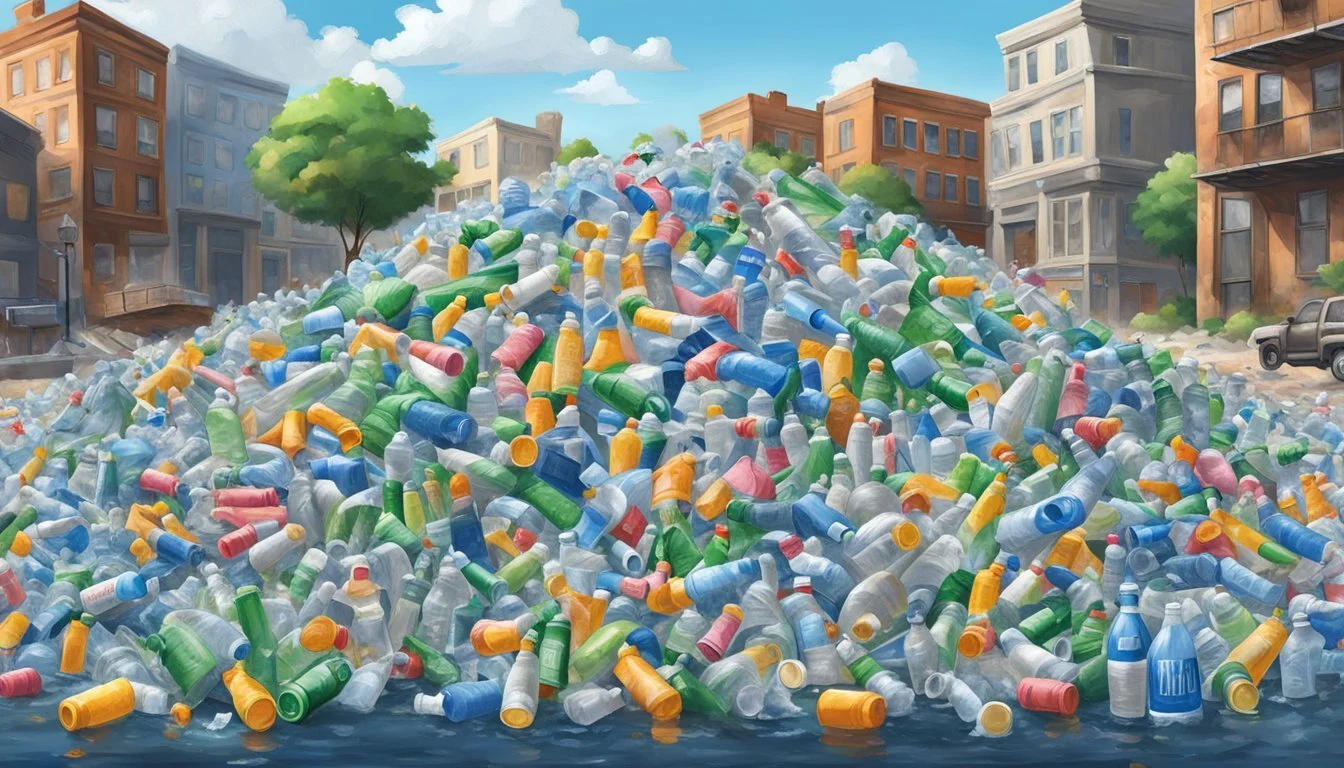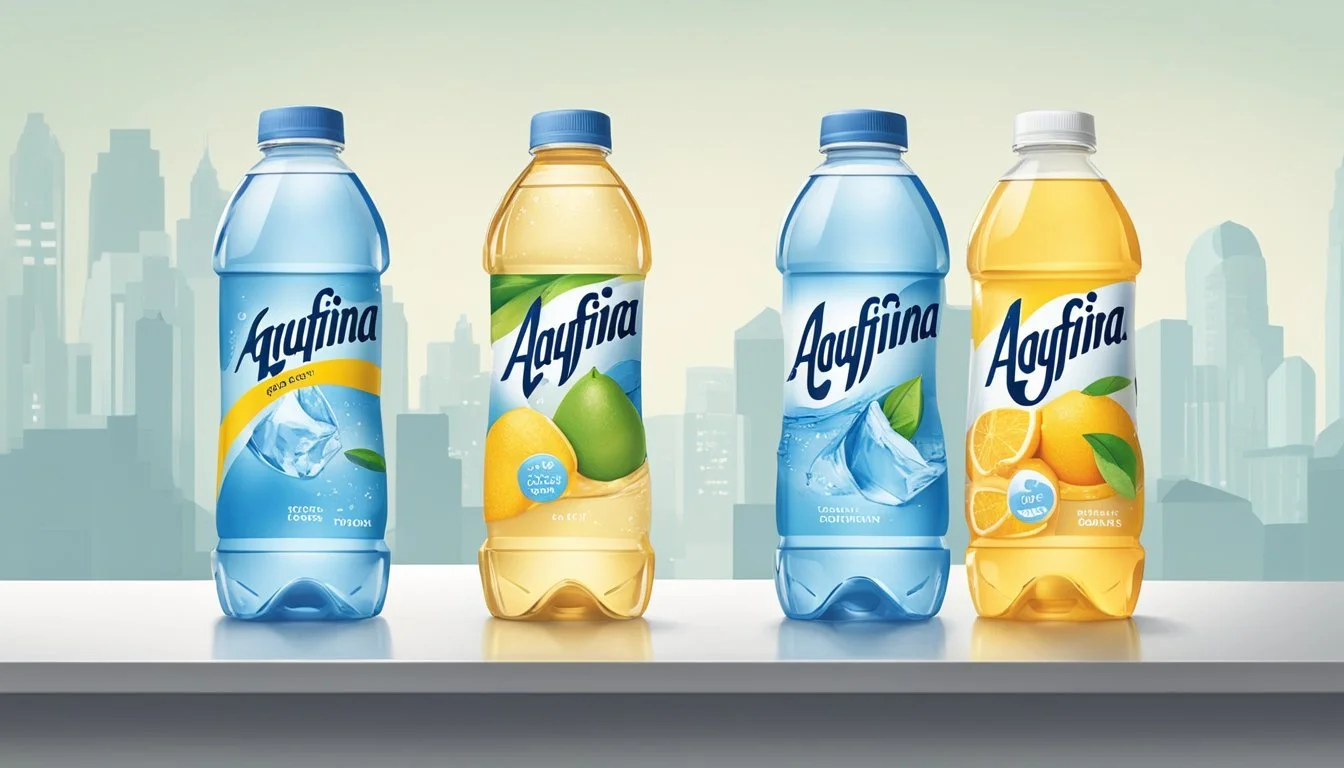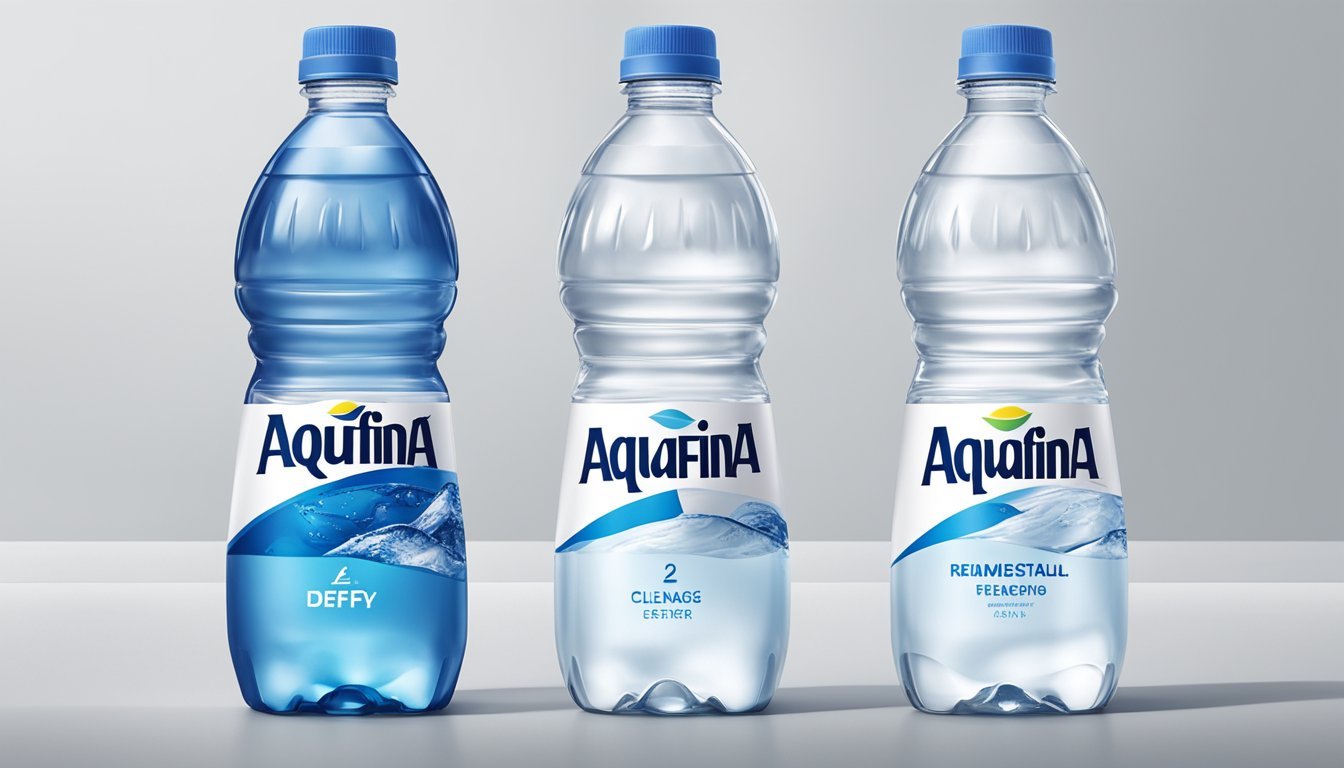Aquafina vs. Defy
Evaluating Taste, Quality, and Value
When choosing between Aquafina and Defy bottled waters, several factors come into play, from taste to filtration methods. Aquafina boasts a rigorous 7-step HydRO-7 filtration process designed to purify the water effectively, ensuring a clean and refreshing taste. On the other hand, Defy offers a different approach, aiming to provide a premium hydration experience that stands out in the crowded market of bottled waters.
For those who prioritize a meticulously purified option, Aquafina may be the preferable choice, thanks to its advanced filtration techniques. Meanwhile, Defy appeals to consumers seeking a high-end bottled water that emphasizes a unique drinking experience. Both brands have their strengths, catering to different preferences and priorities when it comes to bottled water.
Comparing these two bottled water brands involves more than just their purification processes; packaging, environmental impact, and cost also play critical roles. The discerning consumer will find value in understanding these aspects before making an informed decision.
Origin and Source of Water
The origins and sources of Aquafina and Defy water brands vary significantly, impacting their taste and purity. This section explores these differences in detail.
Aquafina's Source
Aquafina originates from public water sources, essentially treated municipal tap water. Introduced in 1994, Aquafina undergoes a rigorous purification process known as HydRO-7.
This method involves several steps such as reverse osmosis, carbon filtration, and ozonation.
PepsiCo, the parent company, markets this purification process as one of the most advanced in the industry.
Despite originating from tap water, the seven-step filtration process allegedly eliminates most dissolved substances, leaving behind a consistently pure product.
Defy's Source
Defy, on the other hand, sources its water from natural springs. Unlike Aquafina, Defy touts its origin as part of its marketing strategy, often mentioning pristine sources from mountainous regions.
The water passes through various geological formations such as volcanic rock and is naturally filtered.
Defy's spring water is rich in minerals, sourced from specific areas to ensure a unique taste profile. The natural filtration process through volcanic and other rock layers is claimed to enrich the water with essential minerals, setting it apart from regular tap water brands like Aquafina.
Filtration and Purification Process
When evaluating Aquafina and Defy bottled water brands, the filtration and purification process plays a crucial role in understanding their quality and taste. Each brand employs distinct methods to ensure purity and safety.
Aquafina's Filtration Methods
Aquafina is well-known for its rigorous HydRO-7 purification process. This seven-step method includes reverse osmosis, which effectively removes dissolved solids and contaminants.
In addition to reverse osmosis, the process includes carbon filtration to eliminate chlorine and organic compounds. Ultraviolet light is then used for sterilization, ensuring that any remaining microorganisms are destroyed.
Ozone sterilization is the final step, providing an additional layer of purification and enhancing the overall purity of the water. Aquafina's process ensures that the water is free from impurities commonly found in tap water.
Defy's Purification Techniques
Defy bottled water employs a combination of advanced filtration techniques to ensure high purity levels. Reverse osmosis is a key component, removing a broad range of dissolved solids and contaminants.
Additionally, Defy uses both ultraviolet light and ozone sterilization to further purify the water. The ultraviolet light kills bacteria and other harmful microorganisms, while ozone sterilization ensures an extra level of cleanliness.
Defy focuses on maintaining natural mineral content, adding back essential minerals to enhance taste and nutritional value. This meticulous approach ensures that Defy's water not only meets safety standards but also provides a refreshing drinking experience.
Taste and Mineral Content
Aquafina and Defy bottled waters have distinct differences in taste and mineral content, which can be attributed to their differing purification processes and mineral additives.
Taste Profiles
Aquafina is renowned for its clean taste, a result of its thorough filtration process that removes most minerals and contaminants. This extensive purification technique can make the water taste smooth and neutral, appealing to those who prefer water without a distinctive flavor profile.
Defy, on the other hand, is often characterized by a more robust flavor profile. This can be attributed to its mineral content and the natural spring sources used in its production. Consumers may notice a slightly bolder water taste due to the presence of naturally occurring minerals, which can provide a refreshing and unique taste experience.
Minerals and Additives
Aquafina undergoes an extensive reverse osmosis process, stripping away not just contaminants but also beneficial minerals. This results in minimal electrolytes and minerals in the final product. The absence of these elements contributes to its flat, neutral taste, which some consumers might find less flavorful but exceptionally pure.
Defy incorporates a range of minerals and electrolytes that not only enhance taste but also potentially offer health benefits. The minerals, often naturally occurring from the water source or added during bottling, can include calcium, magnesium, and potassium. These minerals are essential for maintaining hydration and electrolyte balance within the body. Defy's approach to retaining or adding these minerals aligns it closer to mineral water, which is prized for its natural mineral composition and subtle flavor notes.
Both brands focus on delivering high-quality water, but their divergent approaches to purification and mineral content create distinctive experiences for the consumer.
Health and Hydration
When examining the health benefits and hydration characteristics of Aquafina and Defy, it is essential to consider both the hydration effectiveness and pH levels of each brand. These aspects play crucial roles in determining the beverage's suitability for different individuals.
Hydration Benefits
Aquafina goes through a rigorous 7-step HydRO-7 filtration process, removing impurities that could affect hydration and taste. This results in water that is exceptionally pure. The brand emphasizes superior hydration by ensuring the water is free of contaminants that might hinder effective hydration.
On the other hand, Defy also claims to offer premium hydration benefits. Known for its high pH level and ionized alkaline water, Defy promotes better hydration by potentially being absorbed more efficiently by the body due to its alkalinity. Additionally, the higher pH may help neutralize acid in the body, which can be beneficial for overall health.
Both brands aim to provide effective hydration, but their methods and features differ, with Aquafina focusing on purity and Defy on enhanced absorption through alkalinity.
pH Levels and Alkalinity
Aquafina, with a neutral pH of around 7, aligns with the natural acid-base balance generally found in the human body. This neutral pH means that Aquafina neither contributes to nor detracts from the body's natural pH balance, making it a suitable option for daily hydration needs without altering the body's acidity levels.
Defy, conversely, touts a high pH level of 9.5, categorizing it as an ionized alkaline water. The high alkalinity of Defy is advertised as beneficial for those seeking to counteract acidic diets and lifestyles. It is believed that consuming water with a high pH can help maintain better pH balance in the body, although scientific consensus on these benefits varies.
Consumers worried about acidity or looking for potential health benefits might prefer Defy, while those seeking balanced, neutral hydration may opt for Aquafina.
Packaging and Environmental Impact
Aquafina and Defy Water differ significantly in their packaging choices and environmental impact. The materials used in their bottles and the sustainability efforts of each brand are key aspects to consider.
Bottle Materials and Design
Aquafina typically uses PET plastic bottles, which are lightweight and recyclable. Though recyclable, the actual recycling rates for PET plastic can be relatively low. Aquafina has made efforts to reduce plastic usage by introducing the Eco-Fina bottle, shedding 50% of the bottle weight.
Defy Water, on the other hand, primarily uses boxed water packaging, an alternative that is more environmentally friendly. These boxes are often made from renewable resources and are more easily recyclable compared to plastic bottles.
Sustainability Efforts
Aquafina, produced by PepsiCo, has initiated various sustainability programs aimed at reducing its environmental footprint. The Eco-Fina bottle itself is an example, aimed at saving millions of pounds of plastic annually. Additionally, PepsiCo has committed to increasing the use of recycled materials in its bottles.
Defy Water focuses on sustainability through its choice of boxed water packaging. The production of boxed water generally releases lower CO2 emissions compared to plastic bottles. Furthermore, the brand emphasizes reducing its carbon footprint and sourcing materials responsibly. This dedication to sustainable practices often results in a lower environmental impact.
Brand Comparisons and Market Presence
Aquafina and Defy represent distinct players in the bottled water market, each with unique attributes and market strategies. This section explores how these two brands fare against their competitors and assesses their positions within the broader market context.
Aquafina vs. Competitors
Aquafina, owned by PepsiCo, is a major player in the bottled water market. Known for its rigorous seven-step purification process, Aquafina often ranks highly among purified waters. Its competition includes other giants like Coca-Cola's Dasani, Nestlé's Pure Life, and premium brands like Smartwater and LIFEWTR.
PepsiCo's reputation and extensive distribution network give Aquafina a substantial market presence. The brand's commitment to purity appeals to health-conscious consumers, ensuring its place in both consumer preference and market share.
When comparing to premium brands like Evian, Fiji, and Voss, Aquafina positions itself differently by focusing more on mass-market accessibility rather than premium pricing. However, its high standards in purification set it apart from many middle-tier brands.
Defy and Its Position in the Market
Defy, a relatively newer entrant in the bottled water industry, targets a niche segment with its unique positioning. Often marketed towards athletes and individuals seeking enhanced hydration, Defy distinguishes itself with a focus on performance and recovery.
Market competitors for Defy include brands like Gatorade's Propel, Penta, and Core Hydration. These brands emphasize electrolyte content and advanced hydration, appealing to a specific consumer base looking for more than just purified water.
Defy's brand strength lies in its innovation and targeted marketing, which resonate well with sport-focused consumers. Although it doesn't have the broad market reach of Aquafina or Dasani, its distinct value proposition helps carve out a dedicated following.
In comparison to brands like Icelandic Glacial and Mountain Valley, which also emphasize purity and mineral content, Defy stays competitive by promoting added health benefits. This strategic approach keeps it relevant within a crowded market space of specialized hydration solutions.
Quality Assurance and Regulations
When comparing Aquafina and Defy, it's crucial to assess their adherence to safety standards and testing certifications. This section focuses on how each brand ensures its bottled water is safe and pure for consumers, spotlighting relevant processes and compliance with regulatory bodies.
Safety Standards and Compliance
Aquafina, produced by PepsiCo, and Defy both follow stringent safety standards regulated by the Food and Drug Administration (FDA) and the Environmental Protection Agency (EPA). These regulations ensure that bottled water meets strict purity and contaminant levels.
Aquafina undergoes an extensive HydRO-7 purification process, which includes reverse osmosis and additional filtration steps to remove contaminants and improve taste. Similarly, Defy adheres to high safety standards and is known for its alkaline water, which passes through multiple filtration stages to enhance purity and taste.
Both brands claim to exceed federal safety standards, ensuring minimal presence of PFAS chemicals and other contaminants. These guarantees are vital for consumer trust and present both as safe choices.
Testing and Certification
Aquafina and Defy continuously test their water to ensure quality and safety. Regular testing covers mineral content, pH levels, and the presence of contaminants. Independent laboratories often conduct these tests to provide unbiased results.
Aquafina employs rigorous internal checks and external certifications to affirm its water quality. With frequent assessments aligning with FDA and EPA guidelines, the brand supports its claims of purity and safety. This process helps maintain the high standards expected from a leading bottled water brand.
Defy also engages in comprehensive testing procedures. By obtaining certifications from recognized authorities, Defy assures consumers of its commitment to safety and quality. The brand's water, known for its alkaline properties, undergoes various quality control measures to ensure consistency and safety in every bottle distributed.
Consumer Experience and Convenience
When it comes to consumer experience, both Aquafina and Defy prioritize convenience and hydration.
Aquafina offers a Hydro-7 purification system that includes reverse osmosis, ozone sterilization, and UV treatment. This process gives Aquafina water a clean, crisp taste that many consumers appreciate.
Defy focuses on alkaline water. Marketed to support an active lifestyle, this might appeal more to those who prefer a higher pH level for their hydration needs.
In terms of bottle design, Aquafina opts for a straightforward, no-frills approach, making it easily recognizable on store shelves.
Defy bottles often feature ergonomic designs aimed at ease of use during physical activities, adding an element of convenience.
Taste is subjective and plays a significant role in consumer preference.
Aquafina's purified water is designed to taste neutral, whereas Defy’s alkaline water might have a slightly different taste profile.
For those ranking from worse to best, Aquafina might be favored for those who prefer purified, crisp water, while Defy could be better for those seeking the benefits of alkaline water.
Lifestyle considerations also impact choices. An active individual might lean towards Defy for its alkaline properties. On the other hand, those looking for a reliable, everyday option may prefer Aquafina.
Both brands aim to provide convenience and satisfaction, but your final choice will depend on personal taste and lifestyle needs.








